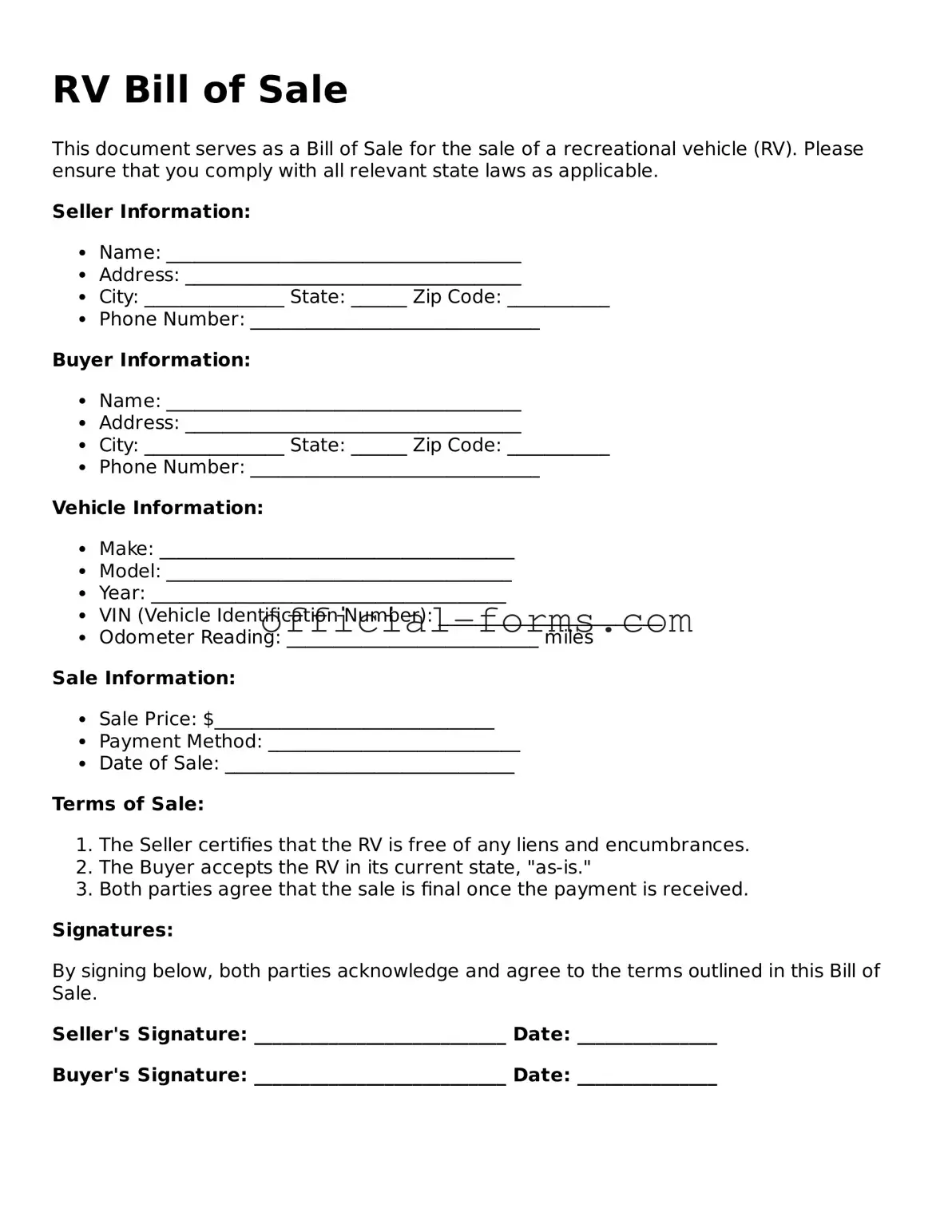Filling out an RV Bill of Sale form can seem straightforward, but many individuals make common mistakes that can lead to complications down the line. One frequent error is failing to include all necessary information about the RV. Buyers and sellers should ensure that details such as the make, model, year, and Vehicle Identification Number (VIN) are clearly documented. Omitting this information can create confusion and disputes in the future.
Another mistake often seen is neglecting to include the sale price. This detail is crucial for both parties. It establishes the value of the transaction and can be important for tax purposes. Without a clearly stated price, the transaction may lack legitimacy in the eyes of the law.
People also frequently forget to sign the document. Both the buyer and seller must provide their signatures for the Bill of Sale to be valid. A missing signature can render the document unenforceable, leading to potential legal issues later on.
Additionally, failing to date the form is a common oversight. The date of the sale is important for record-keeping and can affect the transfer of ownership. It is essential to include the date to avoid any ambiguity regarding when the transaction occurred.
Another error involves not providing adequate contact information. Both parties should include their full names, addresses, and phone numbers. This information is essential for communication and for any follow-up that may be necessary after the sale.
Some individuals may overlook the importance of including any warranties or disclaimers. If the RV is sold "as is," this should be explicitly stated in the Bill of Sale. Clear language regarding the condition of the RV can prevent misunderstandings and protect both parties.
People sometimes forget to keep a copy of the signed Bill of Sale. Retaining a copy is crucial for both the buyer and seller. It serves as proof of the transaction and can be necessary for registration or future resale.
Lastly, failing to verify the identity of the other party can lead to issues. It is advisable to check identification to ensure that the person you are dealing with is legitimate. This step helps to prevent fraud and ensures a smoother transaction.
